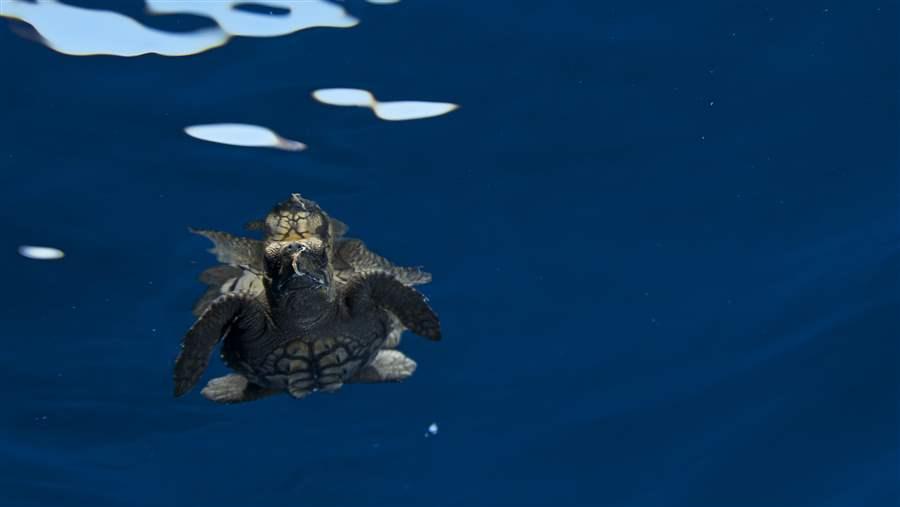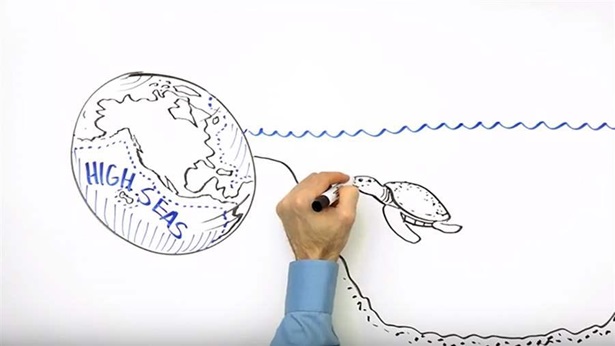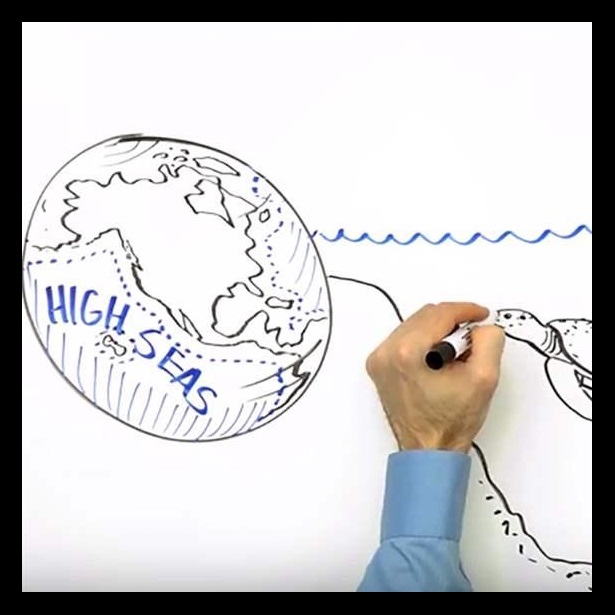Five Studies Shaping Policy to Protect the High Seas
The high seas—the waters beyond the jurisdiction of any government—make up 64 percent of the world’s ocean, yet only a patchwork of mechanisms, and few safeguards, exist to manage the ocean resources in these areas.
In an effort to address that gap, the United Nations in 2016 began the process of drafting a treaty to protect marine biodiversity on the high seas. The process includes a series of meetings of a Preparatory Committee (PrepCom), which is charged with developing recommendations for four elements of the eventual agreement: marine protected areas and marine reserves; environmental impact assessments; ways to share the benefits of marine genetic resources that may be discovered in plants and animals found in the high seas; and capacity building and technology transfer between developed and least developed nations.
As diplomats and policy officials continue to hammer out details of an agreement at the PrepCom sessions, it is critical for these discussions to be informed by the excellent and growing body of science on the high seas, the flora and fauna that live there, and the impact of those remote waters on the rest of the ocean. There are two remaining PrepCom meetings in 2017, and if all goes smoothly, the process will advance with the convening of a negotiating intergovernmental conference in 2018.
Each of the studies summarized below was published after June 2015—the month the U.N. General Assembly decided to move forward with the treaty negotiations—and the research should help decision-makers as they hash out the specifics of one treaty component: area-based management tools.
- Fully protected marine reserves appear best for conservation
A study in Trends in Ecology & Evolution found that fishing is allowed in at least 94 percent of marine protected areas (MPAs) and in more than 99 percent of the ocean worldwide, suggesting that allowing some fishing may be a compromise to get some elements of biodiversity protected. To better safeguard marine life, the authors assert that no-take marine reserves would provide clearer information with regard to conservation benefits and are simpler to enforce than are areas that permit some fishing. They suggest that the term “MPA” should be restricted to areas with greater controls on fisheries than adjacent areas and that “marine reserves” should be used to describe no-take areas. - Ecologically or biologically significant marine areas could provide a starting point for high seas conservation
An analysis published in Conservation Biology reviews the process by which experts and government representatives from around the world came together to identify areas for potential protection on the high seas. The analysis, which summarized the lessons learned from—and the outcomes of—regional workshops held by the Convention on Biological Diversity to identify ecologically or biologically significant marine areas (EBSAs), found that 66 of the 204 EBSAs identified are entirely or partially in areas beyond national jurisdiction. The selection of these regions has led to some agreement on important areas of biodiversity that may ultimately be protected through the high seas treaty. In addition, this process has also yielded the only complete list that specifically highlights potential conservation areas based on their biodiversity. - Protecting 10 percent of the ocean does not go far enough
An analysis published in Conservation Letters of 144 studies concludes that a target, adopted by the Convention on Biological Diversity, of conserving 10 percent of marine environments by 2020 through a network of marine protected areas is insufficient to protect biodiversity and preserve ecosystem services, such as climate change resilience or food availability. The authors suggest that the World Park Congress’ call for safeguarding at least 30 percent of the worlds’ oceans in highly protected marine protected areas is a more adequate target to achieve these conservation goals. - Should the high seas be closed to fishing?
Prohibiting commercial fishing on the high seas could result in a net-zero impact on the amount of fish caught worldwide, according to a paper published in Scientific Reports, a publication of the journal Nature. This analysis looks at how biomass spillover from closed high seas areas could result in increased catches within numerous countries’ national waters of species that live both in and outside the high seas. The paper further identifies countries that would be likely to gain or lose in total catch quantity and value due to a high seas fishing closure. - Some shark and tuna species might evolve to spend more time in marine reserves
Some species protected in no-take marine reserves could actually evolve over time to move less, which in turn would mean they’d spend more time within the boundaries of the reserves, increasing the conservation benefit of those areas, according to a paper published in January in Evolutionary Applications. The researchers simulated the shifting ranges of select shark and tuna species, which are highly migratory. Even in scenarios where species population densities did not substantially increase, the protected areas, when sufficiently large, were an effective tool for conservation of these species, the authors concluded.
Liz Karan directs Pew’s work to protect ocean life on the high seas.















